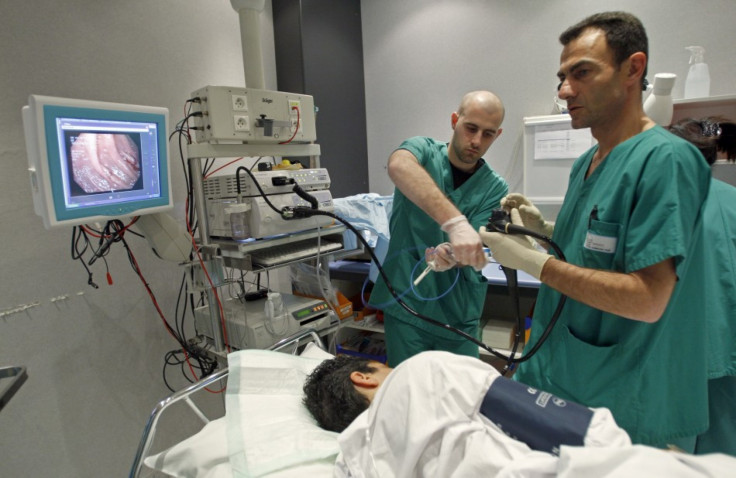Short Training Course Greatly Improves Colon Cancer Screening: Study

A two-hour course for doctors could improve their ability to find pre-cancerous growths during regular colon cancer screenings, Mayo Clinic researchers announced Monday at an American College of Gastroenterology meeting in Washington, D.C. The pilot study measured how the additional training could improve a doctor's ability to catch colon cancer in its early stages, a study lead by Michael Wallace, chief of gastroenterology and professor of Medicine at Mayo Clinic.
Colon and rectal cancer kills about 17 out of every 100,000 Americans every year, according to the National Cancer Institute that tracks cancer lethality and survivorship rates.
The research has not yet been peer reviewed, but Wallace said it shows promise. Fifteen doctors participated in the pilot study at Mayo's campus in Jacksonville, Fla. His team is seeking funding for a larger study that would include all of the medical center's approximately 100 gastroenterologists.
Doctors find growths in fewer than 15 percent of women and 25 percent of men. Based on over 10 years of research into colon cancer screening, experts say that those rates miss some potential cancer patients.
Earlier studies indicated that regular screenings reduce colon cancer risk by 70 to 90 percent, but the medical community could do an even better job, Wallace said.
Our goal is to make colonoscopy as close to 100 percent effective as possible, he said.
Wallace and his team found that doctors at Mayo were detecting adenomas in 36 percent of patients, well above the national benchmark of 15 and 25 percent for women and men, respectively.
That suggests that there is some variation nationally in quality - more than we would like, Wallace said.
His team divided the faculty into two groups for the study - one group received the new brief training session and the other did not. The training focused on techniques that can lead to finding more adenomas, including carefully washing the walls of the colon at the beginning of the procedure, simply slowing down and constantly turning the endoscope to find subtle growths hidden in folds.
We trained these doctors to look for those subtle clues, Wallace said.
They found that the adenoma detection rate was 36 percent among doctors who did not receive the new training. That number increased to 47 percent in the group that received training, more than double the national benchmark. Because of the positive results, all doctors at Mayo Clinic in Florida have now undergone the training program.
Wallace believes the new brief training could improve outcomes for patients if it is widely adopted. A study earlier this year in The New England Journal of Medicine further confirmed what the gastroenterology community already knew - that the rate at which doctors' detect adenomas in their patients is linked with patient outcomes. Patients whose doctors had a better detection rate were less likely to get colon cancer in a five-year period following that colonoscopy, the study found.
This is the first successful trial that we know of to show that you can improve quality using the adenoma detection rate as a benchmark of quality, Wallace said.
The American Cancer Society recommends that men and women begin getting colonoscopies at age 50, continuing to do so every 5 years.
© Copyright IBTimes 2024. All rights reserved.











